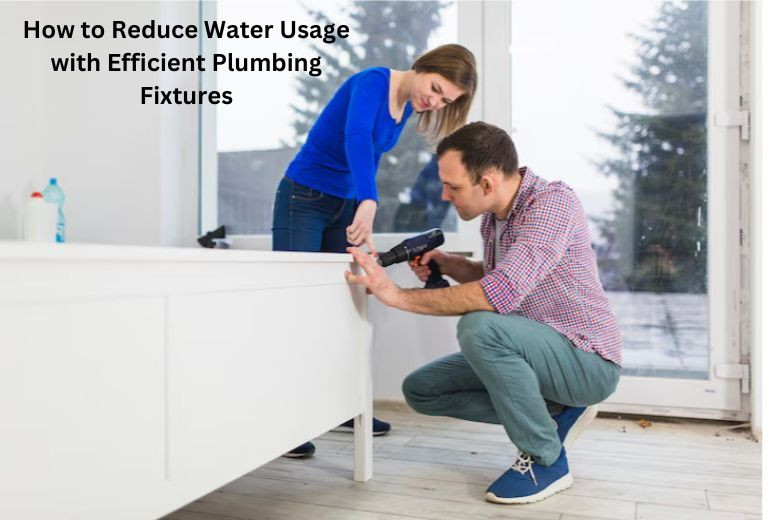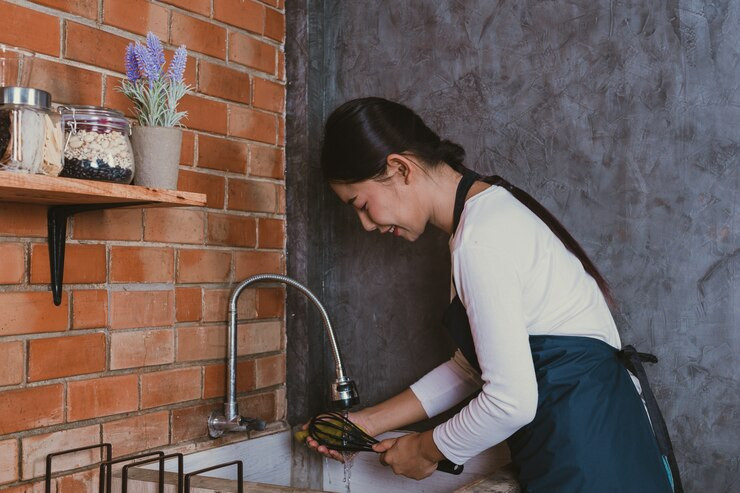How to Reduce Water Usage with Efficient Plumbing Fixtures
Posted on September 18, 2024 by Admin

Water conservation has become a great issue, knowing that environmental problems are rising up for this earth. Water can be saved at homes by efficient types of plumbing fixtures. Efficient plumbing fixtures help reduce gallons per minute of water without affecting performance. You can save valuable water, slash utility bills, and help to save the environment by simply installing efficient plumbing fixtures.
Understanding Efficient Plumbing Fixtures
These are various kinds of units that range from low-flowing shower heads and faucets to toilets and any other device that aids in saving water. Such plumbing appliances are made in such a way that they save water while giving almost the same functionality and comfort. This is in advanced technology that will control the volume being discharged while keeping waste at bay.
Types of Efficient Plumbing Fixtures
1. Low-Flow Showerheads:
The most traditional shower heads use up to 2.5 gallons of water per minute. Low-flow showerheads bring that down to 1.5-2.0 GPM without ruining the water pressure.
2. High-Efficiency Toilets:
Older toilets can use as much as 3.5 to 7 gallons per flush. High-efficiency toilets use 1.28 gallons or less per flush. Of course, there are other kinds of efficient toilets, including dual-flush models that provide separate flush volumes for liquid and solid waste.
3. Water-Efficient Faucets:
As noted, in standard faucets, flow rates even run to a minimum of 2.2 GPM. More efficient plumbing fixtures such as aerated and laminar-flow faucets drop this to under 1.5 GPM. They reduce water use quite dramatically.
4. Water-Efficient Washing Machines and Dishwashers:
These new models can use significantly less water per cycle than older design models can. Make sure to buy appliances rated ENERGY STAR for the best efficiency.

Benefits of Efficient Plumbing Fixtures
1. Conservation of Water:
The utmost benefit of efficient plumbing fixtures is that they conserve water. It not only conserves this important resource but also helps save strain on the local water supplies and wastewater treatment facilities.
2. Cost Savings:
High-efficiency plumbing fixtures reduce water bills. Lower water consumption in the long run translates to money saved, which pays for the fixtures.
3. Environmental Protection:
Use of less water equates to less energy used for heating and pumping it, thus reducing the carbon footprint and aiding in the conservation of the environment.
4. Better Performance:
Today's efficient plumbing fixtures are typically designed to perform just as well, or even better, than their traditional counterparts. In fact, advancements in technology could have you living a more comfortable or convenient life than before, all the while using less water.
How to Upgrade to Efficient Plumbing Fixtures
1. Check Your Current Fixtures:
First, assess the present fixtures inside the house. Take note of what are inefficient or ancient ones that possibly leak and use up much water for no good reason since these would be your first targets for replacement.
2. Discover and Choose Products:
Be on the lookout for products carrying the WaterSense label. It would be an indication that the product is being EPA certified. This is good news as it symbolizes that products are tested and proven to hold water use standards whose efficiency demands are very high.
3. Use a Professional Plumber:
Although most fixtures come coupled as self-install, the professional service of a plumber ensures you garner the best performance by suitable fitting.
4. Monitor and Maintain:
Be sure to check the obsoleted plumbing fixtures that have been replaced with the good quality ones to monitor them over time for any leakage and perform some maintenance practices that would still ensure efficiency in them.
Conclusion
With efficient plumbing fixtures, you will realize that your consumption of water decreases, and it makes perfect sense in contributing very effectively to conserving water. Small home adjustments can make up for a number of benefits that also include reduced water bills and better performance with less harm to the environment. In short, efficient plumbing fixtures are friendly both to your wallet and the planet.
Also Read :
The Benefits of Professional Drain Cleaning vs. DIY Methods
How to Prevent Water Damage in Your Home
How to Integrate Home Automation Systems with Existing Electrical Systems
How to Finance Your Roof Replacement: Loans, Grants, and Insurance
Roof Safety Tips for Homeowners
The Impact of Algae and Moss on Your Roof
How to Deal with Roof Leaks During a Storm
How to Create an Electrical Maintenance Plan for Your Home
Faqs
-
1. What are efficient plumbing fixtures?
Basically, the efficient plumbing fixtures would include those designed to allow less water without affecting the performance. The examples are low-flow showerheads, high-efficiency toilets, and water-saving faucets.
-
2. How much water can I save with efficient plumbing fixtures?
The consumption of water might be significantly reduced when efficient plumbing fixtures are used. Low-flow showerheads, for example, can save up to 1 gallon per minute, and high-efficiency toilets are capable of using 1.28 gallons per flush, in comparison to older models that use 3.5 to 7 gallons.
-
3. Are efficient plumbing fixtures expensive to install?
While efficient plumbing fixtures entail a greater up-front cost, in most cases, water bill savings and reduced environmental impacts pay off as a cost-effective investment in the long term.
-
4. Do efficient plumbing fixtures require professional installation?
Although some fixtures like aerators are DIY-friendly, it is highly recommended to have more complex fixtures, such as toilets, installed professionally for optimum performance and trouble avoidance.
-
5. Where can I find efficient plumbing fixtures?
Seek out the EPA's WaterSense label on products available at most home-improvement stores and online. The certification ensures these fixtures adhere to strict standards in both efficiency and performance.
Recent Post
- Top Plumbing Service Providers in Arizona, USA
- Top 10 Electrician Service Providers in Alabama, USA
- Top 20 Roof Repair Service Providers in Alabama, USA
- The Role of Roof Insulation in Energy Efficiency: Tips and Tricks
- Understanding Roof Damage from Wildlife and How to Prevent It
- How to Choose the Best Roofing Contractor for Emergency Repairs
- Roofing Maintenance for Historic Homes: Preserving Architectural Integrity
- The Importance of Proper Attic Ventilation for Roof Health
- How to Identify and Prevent Roof Mold and Mildew
- The Best Practices for Removing Snow from Your Roof